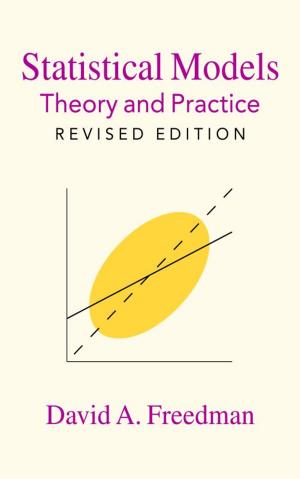Foundations of Dynamic Economic Analysis
Optimal Control Theory and Applications
Business & Finance, Economics, Econometrics, Statistics| Author: | Michael R. Caputo | ISBN: | 9781107713772 |
| Publisher: | Cambridge University Press | Publication: | January 10, 2005 |
| Imprint: | Cambridge University Press | Language: | English |
| Author: | Michael R. Caputo |
| ISBN: | 9781107713772 |
| Publisher: | Cambridge University Press |
| Publication: | January 10, 2005 |
| Imprint: | Cambridge University Press |
| Language: | English |
Foundations of Dynamic Economic Analysis presents a modern and thorough exposition of the fundamental mathematical formalism used to study optimal control theory, i.e., continuous time dynamic economic processes, and to interpret dynamic economic behavior. The style of presentation, with its continual emphasis on the economic interpretation of mathematics and models, distinguishes it from several other excellent texts on the subject. This approach is aided dramatically by introducing the dynamic envelope theorem and the method of comparative dynamics early in the exposition. Accordingly, motivated and economically revealing proofs of the transversality conditions come about by use of the dynamic envelope theorem. Furthermore, such sequencing of the material naturally leads to the development of the primal-dual method of comparative dynamics and dynamic duality theory, two modern approaches used to tease out the empirical content of optimal control models. The stylistic approach ultimately draws attention to the empirical richness of optimal control theory, a feature missing in virtually all other textbooks of this type.
Foundations of Dynamic Economic Analysis presents a modern and thorough exposition of the fundamental mathematical formalism used to study optimal control theory, i.e., continuous time dynamic economic processes, and to interpret dynamic economic behavior. The style of presentation, with its continual emphasis on the economic interpretation of mathematics and models, distinguishes it from several other excellent texts on the subject. This approach is aided dramatically by introducing the dynamic envelope theorem and the method of comparative dynamics early in the exposition. Accordingly, motivated and economically revealing proofs of the transversality conditions come about by use of the dynamic envelope theorem. Furthermore, such sequencing of the material naturally leads to the development of the primal-dual method of comparative dynamics and dynamic duality theory, two modern approaches used to tease out the empirical content of optimal control models. The stylistic approach ultimately draws attention to the empirical richness of optimal control theory, a feature missing in virtually all other textbooks of this type.















